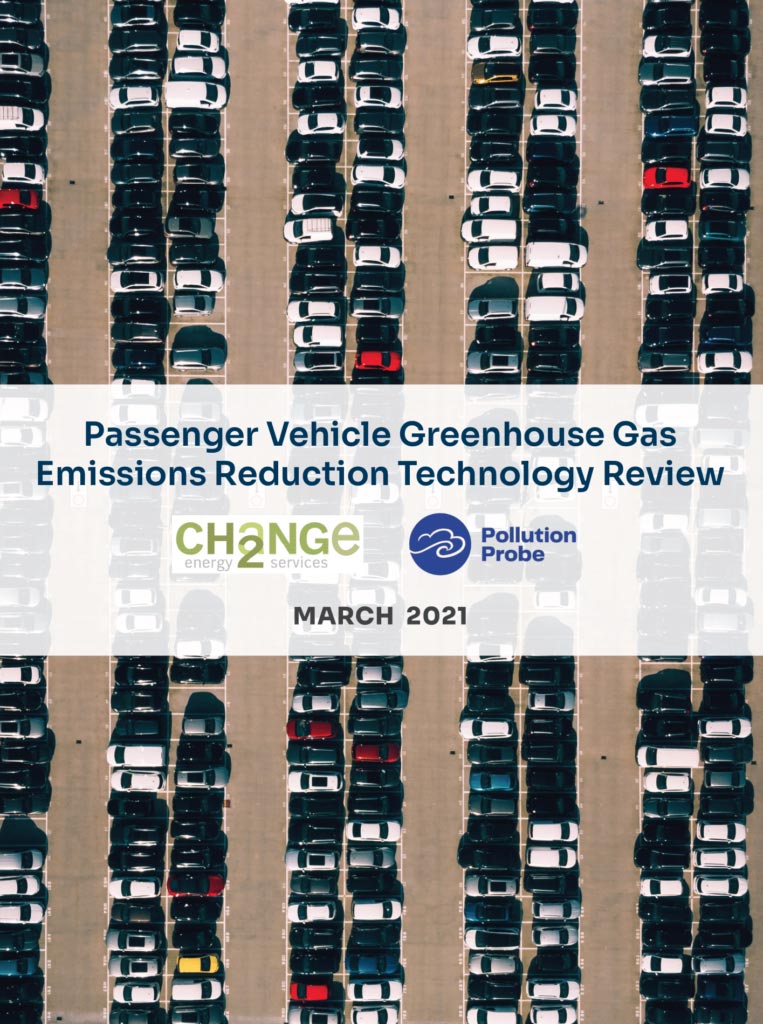Passenger Automobile and Light Truck Greenhouse Gas Emissions Reduction Technology Review
This project was a joint undertaking by Pollution Probe and Change Energy Services. Its purpose was to update the knowledge and awareness of Canadian policy-makers with regard to the ability of emerging, advanced technologies to reduce greenhouse gas (GHG) emissions from passenger cars and trucks – specifically cars and trucks that make use of internal combustion engines (ICEs). Technologies in scope included those related to reducing heat-loss within engines, increasing compression ratio, reducing ancillary loads on engines and improving drivetrain efficiency.
The project report presents the findings of a detailed literature review and interview process in which recognized experts and thought-leaders in automotive technology innovation from around the world were consulted.
The research was driven by two basic questions:
What is the potential of emerging advanced technologies to reduce GHG emissions from ICE vehicles, considering Canadian operating conditions and market preferences?
What are the estimated costs and payback times of advanced technologies for consumers?
A key finding was an apparent divergence in fundamental design philosophies between two competing technology development pathways within the industry, in which aggressive hybridization is pit against aggressive engine downsizing enabled by advanced turbocharging. The project team found that a majority of experts consider hybrid-electric powertrains to be by far the most important suite of technology in terms of emissions reduction potential. No other singular area of technology advancement comes close to the magnitude of reduction in fuel consumption delivered by aggressive hybridization – 20% at the low end and upwards of 30% for the most sophisticated (and expensive) systems. While the project report assesses the GHG reduction potential of dozens of other ICE vehicle technologies, hybridization emerged as the clear winner.
As governments continue to plan and implement the next generation of emissions regulations for passenger vehicles as well as adoption targets for zero emission vehicles such as battery electric and hydrogen fuel cell, it is important for them to base plans on real-world data around technology performance, costs, and environmental benefits. Low emission vehicles can only have an impact if they are affordable enough to be adopted by the masses. Therefore policy-makers must engage in a calculated balancing act to ensure that they incentivize the use of the lowest emitting vehicles, disincentivize the use of the highest emitting vehicles, and that at the end of the day Canadians are able to meet their transportation needs in a manner that does not break the bank. Governments must also ensure that automakers are ready, willing and able to supply the vehicles that are capable of achieving optimal environmental, social and economic benefits. Reflecting the dynamic and challenging roles played by policy-makers, the project report carefully weighs the pros and cons of each technology to provide guidance on future passenger vehicle regulations, including the eventual phase-out of ICE technologies from the passenger vehicle segment.

